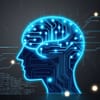The New Yorker’s thought-provoking article, “The Case That AI Is Thinking,” delves into the ongoing debate over whether artificial intelligence systems, particularly advanced large language models (LLMs), are genuinely capable of thought. It traces AI’s development from early rule-based programs to modern neural networks, highlighting how today’s systems learn patterns from enormous datasets. Scientists and philosophers interviewed suggest that these models mimic certain functions of the human brain, raising the possibility that they may exhibit early signs of cognitive behavior rather than simple programmed imitation.
The piece explores how LLMs compress vast information into complex, multi-dimensional representations that allow them to generalize, reason, and create meaningful associations. Cognitive scientists note that these AI systems process information in ways that mirror how humans form concepts and analogies. The article connects this with theories in neuroscience, suggesting that such models might reflect aspects of biological learning. However, it remains cautious, acknowledging that while AI can simulate understanding through language, it does not necessarily experience consciousness or awareness.
Despite their astonishing capabilities, the article emphasizes that AI lacks embodiment, sensory grounding, and subjective experience — critical components of human thought. Unlike people, machines do not learn from lived experience or emotional context. Their “knowledge” exists only as statistical correlations within data, making their reasoning contextually shallow despite appearing intelligent. This distinction, the author argues, is vital to prevent overestimating AI’s abilities or equating computational processes with human thinking.
In its conclusion, the article contends that whether or not AI truly “thinks,” it compels humanity to reconsider what intelligence and consciousness mean. The boundary between human cognition and artificial reasoning is becoming increasingly blurred, urging society to redefine the essence of thought itself. The author calls for humility and ethical reflection as AI’s growing cognitive resemblance challenges long-held beliefs about human uniqueness and the future of intelligent life.


